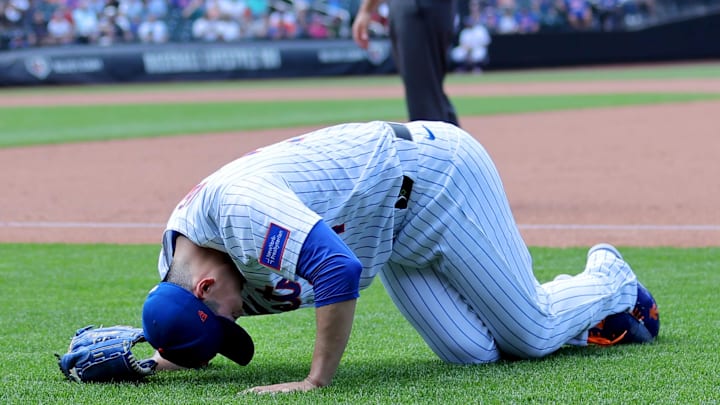Ever since the New York Mets fell out of a playoff spot, fans have been trying to figure out where things went wrong. What was the turning point that turned the Mets from one of the best teams in baseball into one of the worst teams? Fans have had many theories on when exactly things went sour for the Mets. Some like to point to when Francisco Lindor broke his toe, others point to when the pitching regressed from the best in baseball to barely being able to make it out of the fourth inning.
However, the real turning point came on what should've been a routine play. On June 12th, the Mets were playing the Nationals, and CJ Abrams hit a routine groundball to first base. However, disaster struck when Pete Alonso made a poor throw to Kodai Senga, causing Senga to injure his hamstring while trying to catch the ball, putting him on the shelf for a month. It's something that Joel Sherman wrote about in his most recent article. But how could such a simple play flip this season on its head?
The Kodai Senga injury and following days were a gut punch the Mets couldn't recover from
At first, it seemed like Senga's injury was not going to hurt the Mets. Despite scoring three runs in the ninth, the Mets held on to beat the Nationals 4-3. The following night, against the Rays, the Mets jumped out to an early 5-1 lead thanks to rallies in the 4th and 5th innings. It seemed like the Mets were going to continue their winning ways despite their best pitcher being out for the foreseeable future.
But then the sixth inning came, and the "evils from Pandora's Box" were unleashed on the Mets. The Mets brought in Paul Blackburn to give them some length and give their tired bullpen a rest. But Blackburn struggled, giving up four runs on four hits. They then went to Max Kranick to stop the bleeding, but he gave up the go-ahead two runs to give the Rays the lead. In one inning, the Mets went from being up 5-1 to trailing 7-5.
That sixth inning felt like the Mets were punched in the face and never recovered from it. Not only did they lose that game, but they also ended up getting swept by the Rays and weren't competitive in either game. They then went on to drop seven of the next 10 games to divisional rivals, the Braves and the Phillies. This team limped into the All-Star Break, going 7-18 after Senga went down with an injury.
While other factors contributed to the Mets' poor performance, the Senga injury was the straw that broke the camel's back. Without their "ace," the Mets' pitching regressed, and with Lindor playing through a broken toe, the offense wasn't the same. It was a perfect storm that led to the Mets losing confidence and were never able to recapture the magic they had in the first few weeks of the season.
Although there were plenty of moments you can point to as when the season fell apart, the Senga injury will always be the one that sticks out. It was a blow that the Mets were just never able to recover from.
